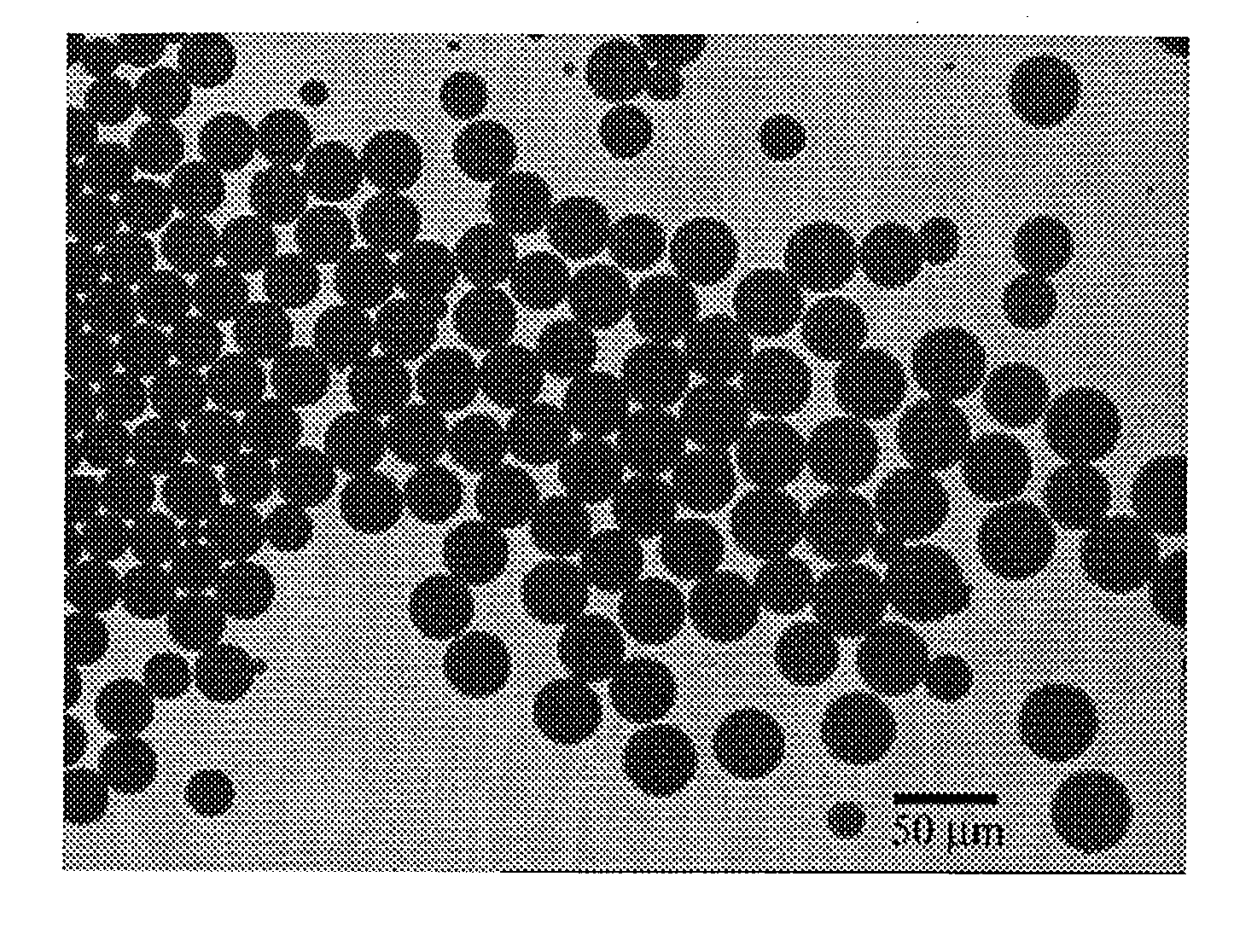Capsules, materials for use therein and electrophoretic media and displays containing such capsules
a technology of electrophoretic media and capsules, which is applied in the preparation of microcapsules, instruments, optics, etc., can solve the problems of insufficient service life of these displays, preclude their widespread use, and prior art microcapsules have limitations in this regard, so as to enhance the stability of the coacervate complex, the range of useful materials can be extended, and the solubility of the coacervating anion is enhanced
- Summary
- Abstract
- Description
- Claims
- Application Information
AI Technical Summary
Benefits of technology
Problems solved by technology
Method used
Image
Examples
example 2
[0070] (Control): Electrophoretic Display using Gum Acacia / Gelatin Encapsulation Material
[0071] This Example illustrates the preparation of a prior art encapsulation material, electrophoretic medium and electrophoretic display of the type described above in which the encapsulation material is formed by coacervation of gum acacia and gelatin.
[0072] Encapsulation of the same internal phase as in Example 1 above was carried out in substantially the same manner as in that Example, except that gum acacia was used in place of poly(acrylic acid). After emulsification of the internal phase in gelatin, a solution of acacia (66.7 g, supplied by AEP Colloids, Inc.) in water (656 mL) was added over a period of about 1 minute, and the pH of the mixture was lowered to approximately 4.9 using 10 per cent aqueous acetic acid. A concentrated capsule slurry was prepared by washing and sedimentation as described in Example 1, and the pH of the slurry adjusted to pH 8 with 1 weight percent ammonium hyd...
example 3
[0073] Comparison of Electro-Optic Performance of Displays under High Humidity
[0074] This Example illustrates the improved electro-optic performance of the electrophoretic display of the present invention prepared in Example 1 above under high humidity conditions, as compared with the prior art display prepared in Example 2 above.
[0075] The electro-optic performance of the displays prepared in Examples 1 and 2 above was evaluated after equilibration of the displays for two weeks in humidity-controlled chambers at 25.degree. C. / 30% relative humidity (RH) and 25.degree. C. / 70% RH. The displays were driven using 15 V switching pulses, and the reflectivity of the pixels to white light in the white and black states was measured. During these measurements, the length of the switching pulses was adjusted to achieve optical saturation of the displays; for the displays equilibrated at 30% RH, a pulse length of 300 msec was used, whereas for those equilibrated at 70% RH, pulse lengths up to 6...
example 4
[0083] A slurry of microcapsules were prepared substantially as described in the aforementioned application Ser. No. 10 / 063,236, Paragraphs [0061]-[0068]. An aliquot (25 g) of the slurry, containing 80 per cent by weight of microcapsules, was mixed with an aqueous gelatin solution (9 g of a 15 weight percent solution, equivalent to 1.33 g of gelatin) so that the weight ratio of capsules to gelatin in the mixture was 15:1. Mixing was effected at 45.degree. C. and the resultant mixture was maintained at this temperature and stirred until completely homogeneous. The mixture was then coated on a polyester film using a draw bar at 2, 3 and 4 mil (51, 76 and 101 1 / 4 m respectively) settings. FIG. 1 illustrates the appearance of the wet 2 mil film at this point. The coated films were allowed to dry in air for 10 minutes and then in an oven at 50.degree. C. for 15 minutes, after which the film produced at the 2 mil setting produced a dried film 25 1 / 4 m thick, substantially the thickness de...
PUM
| Property | Measurement | Unit |
|---|---|---|
| temperature | aaaaa | aaaaa |
| DC voltage | aaaaa | aaaaa |
| DC voltage | aaaaa | aaaaa |
Abstract
Description
Claims
Application Information
 Login to View More
Login to View More - R&D
- Intellectual Property
- Life Sciences
- Materials
- Tech Scout
- Unparalleled Data Quality
- Higher Quality Content
- 60% Fewer Hallucinations
Browse by: Latest US Patents, China's latest patents, Technical Efficacy Thesaurus, Application Domain, Technology Topic, Popular Technical Reports.
© 2025 PatSnap. All rights reserved.Legal|Privacy policy|Modern Slavery Act Transparency Statement|Sitemap|About US| Contact US: help@patsnap.com



